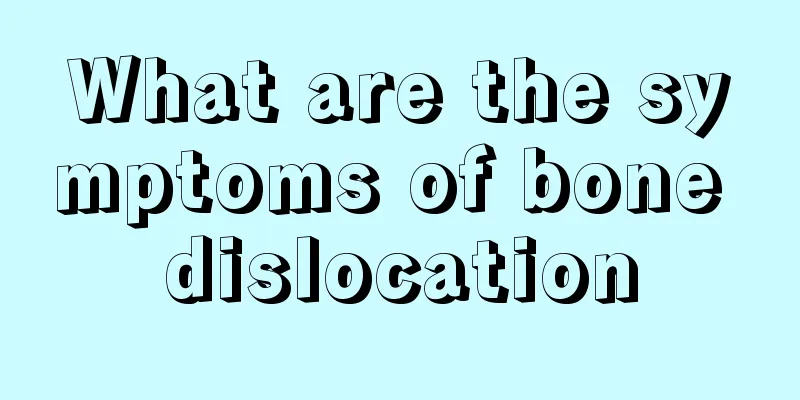What are the symptoms of bone dislocation

|
Joint dislocation is a relatively common symptom, often caused by external force, sprains, etc., which has a great impact on health. We know that joints are often areas with more activities. When joint dislocation occurs, it will affect the movement function, cause tissue edema, cause pain, and even cause functional disorders and loss of the original normal activity function. 1. Swelling: The joints are obviously swollen due to bleeding and edema. 2. Obvious pain: aggravated by movement of the affected limb. 3. Functional disorder: After joint dislocation, the structure becomes abnormal and the joint loses its normal function. Symptoms of special joint dislocation: 1. Elastic fixation: After a joint is dislocated, the untorn muscles and ligaments can keep the dislocated limb in a special position, and there is a feeling of resistance and elasticity during passive movement. 2. Deformity: After joint dislocation, the limbs will show deformities such as rotation, adduction or abduction, and lengthening or shortening in appearance, which are asymmetrical with the healthy side. The normal bony landmarks of the joint are altered. 3. Glenoid void: Initially, the glenoid void is easier to palpate, but becomes difficult to palpate when swelling is severe. Clinical manifestations of hip dislocation: 1. Anterior dislocation: The affected limb is in abduction, external rotation and flexion deformity, the groin is swollen, and the femoral head can be felt. 2. Posterior dislocation: Hip pain and immobility, shortening of the affected limb, flexion, adduction and internal rotation of the hip joint, a protruding femoral head can be felt at the buttocks, the greater trochanter is obviously displaced upward, and some cases show signs of sciatic nerve injury. 3. Central dislocation: Due to heavy bleeding in the retroperitoneal space, hemorrhagic shock may occur, with swelling, pain, and movement disorders at the injured site. There is often a large hematoma on the lateral side of the upper thigh. The shortening of the limb depends on the degree of femoral head recession, and it may be combined with abdominal visceral injuries. X-ray and CT examinations can understand the injury and have a three-dimensional understanding of acetabular fractures. Warm reminder, everyone needs to pay attention to recognize these symptoms, and be careful to avoid edema and swelling, and receive reasonable treatment. If the pain is obvious, it will have a great impact on the patient's body. You should also pay attention to reasonable conditioning at ordinary times. After we understand the symptoms of this disease, we must pay attention to timely treatment. |
<<: Symptoms of fertilized egg implantation
>>: What are the symptoms of gastric mucosal detachment
Recommend
How to treat bulging blood vessels in the calves
Blood vessels are organs throughout the human bod...
What are the benefits of activated carbon fiber protective masks?
Masks are an indispensable necessity in our daily...
What are the usual treatment measures for gallbladder cancer?
Gallbladder cancer is a common disease in our dai...
Is nasopharyngeal cancer contagious to others?
In real life, there are various diseases that con...
How to diagnose rectal cancer
In recent years, rectal cancer has become one of ...
The benefits of massaging the Yongquan acupoint
Yongquan acupoint is an important acupoint in our...
What issues should prostate cancer patients pay attention to?
There are many men in the society who are always ...
Melanoma symptoms most often appear in the lower limbs
Melanoma is also known as malignant melanoma. In ...
How to relax neck muscles
Long-term use of mobile phones or maintaining the...
There is a painful lump on the back of my head
It is not uncommon for a hard and painful lump to...
Can I get pregnant if I have a teratoma on my left ovary?
Whether you can get pregnant with a left ovarian ...
What are the diagnostic methods for liver cancer? Six methods for diagnosing liver cancer
Clinically, the symptoms of liver disease are not...
Purpura in Traditional Chinese Medicine
Purpura is a relatively common symptom and also a...
The harm of chemotherapy after lung cancer surgery to the human body
Chemotherapy after lung cancer surgery is harmful...
What will happen if polycystic ovary syndrome is not treated
Polycystic kidney disease is a benign kidney dise...









